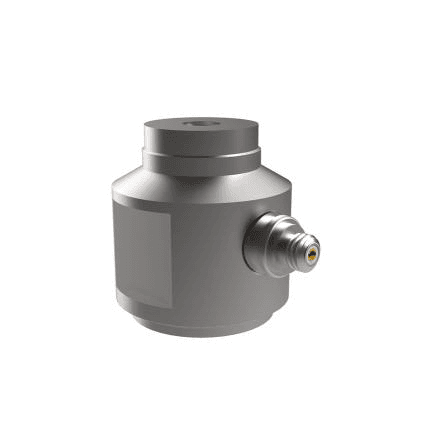
The Dytran model 3120B is a double ended IEPE reference (comparison) accelerometer, offering a convenient means of determining the sensitivity and frequency response characteristics of unknown acceleration, velocity and displacement sensors. A vibration laboratory already equipped with an electrodynamic shaker and control system can easily incorporate use of the model 3120B to accomplish in–house NIST […]
The Dytran model 3120B is a double ended IEPE reference (comparison) accelerometer, offering a convenient means of determining the sensitivity and frequency response characteristics of unknown acceleration, velocity and displacement sensors. A vibration laboratory already equipped with an electrodynamic shaker and control system can easily incorporate use of the model 3120B to accomplish in–house NIST traceable calibrations. model 3120B offers a 10 mV/g sensitivity, and mounts to a shaker head via 10–32 tapped hole.
Back–to–back comparisons with a double ended calibration standard accelerometer, such as the Dytran model 3120B, entails mounting the test accelerometer directly to the top mounting surface of the calibration standard (model 3120B) and driving the coupled pair with an electrodynamic shake system at various frequencies and amplitudes. At each test frequency, the amplitude is set and the corresponding output read from the test accelerometer. To form a complete measurement system, the user will need to supply the cables, power supply unit and electrodynamic shake system.
Features:
Applications:
| Model | Specifications |
| 3120B | 10 mV/g sensitivity, 500g range, 10–32 radial connector, 10–32 tapped holes top and bottom, 85 grams,–60 to +200°F Operation |